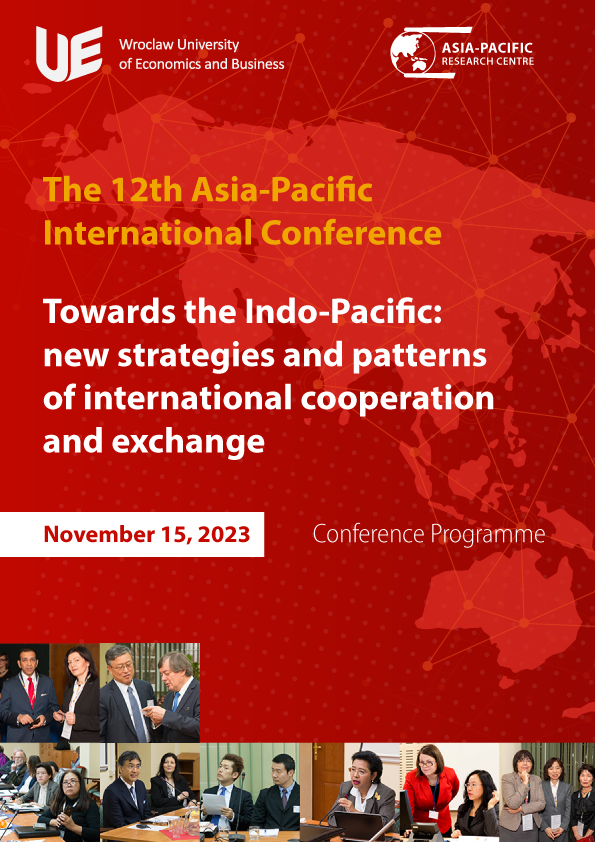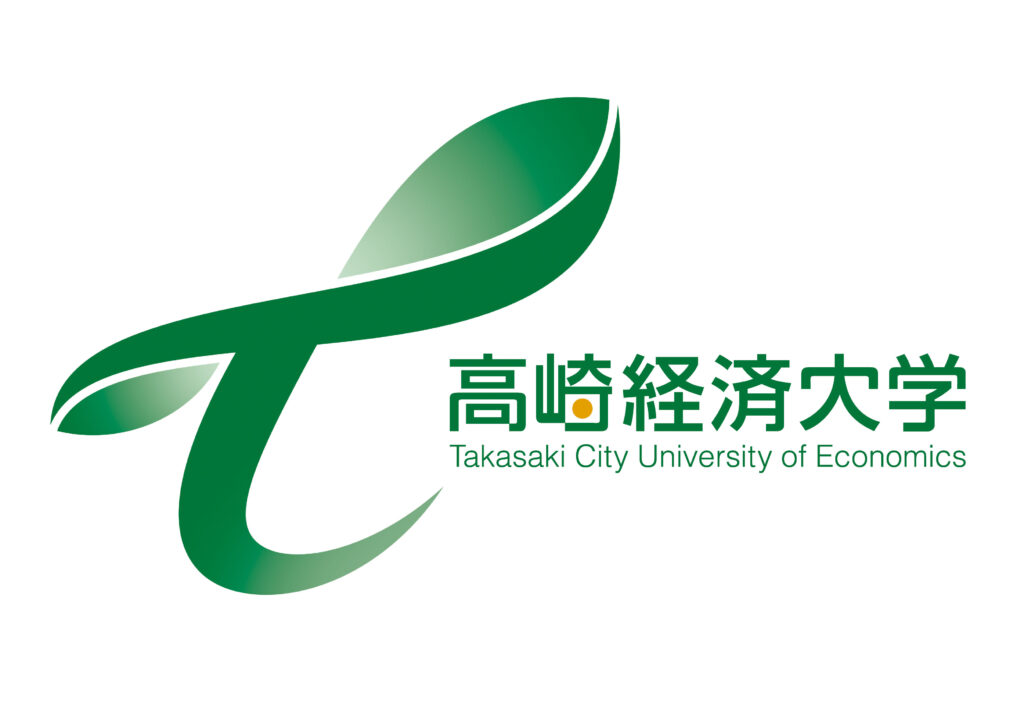Hybrid Session II (with presentations and discussion)
Zoom webinar: https://zoom.us/j/86041407247
Chair: dr Anna H. Jankowiak, prof. UEW, Director of International Cooperation Center, Wrocław University of Economics & Business, Poland
| Opening & welcome | |
| Ferment to preserve – spontaneously fermented food Asian vs Polish heritage dr hab. inż. Joanna Harasym, prof. UEW, Wrocław University of Economics & Business, Poland dr hab. inż. Agnieszka Orkusz, prof. UEW, Wrocław University of Economics & Business, Poland | The presentation explores the rich, diverse traditions of fermentation in Asian and Polish cuisines. Fermentation, a time-honored technique, is pivotal in culinary landscapes for preserving food, enhancing flavor, and promoting health. In Asian heritage, fermentation is extensively used to craft various staples such as soy sauce, kimchi, and miso, each offering a unique, complex taste profile and myriad health benefits attributed to probiotics. Concurrently, Polish cuisine boasts an array of fermented goods, including sauerkraut, pickles, and traditional soured rye soup (żurek), celebrating a harmonious balance between tartness and savoriness. These iconic ferments not only underscore the preservation of food but also encapsulate the essence of cultural identity and history for both Asian and Polish communities. This presentation will elucidate the spontaneous fermentation processes, highlight the distinctive flavors and health benefits associated with these fermented foods, and delve into the significance of fermentation in safeguarding and transmitting cultural heritage. Attendees will gain insightful knowledge into the intricate tapestry of fermentation practices, underscoring the convergence and divergence in Asian and Polish fermented culinary traditions. |
| Central Bank-Issued Digital Currency: Digital Yuan and the Party-State’s Control over the Financial Sector Chaiwat Wuthinitikornkit, SIRPA, Fudan University, China | The Chinese party-state’s exercise of control over the financial industry through its corresponding policies has been a subject of immense interest for many scholarly and policy researchers on the country’s economic transformation. As China’s economic reforms enter its fifth decade, the ongoing financial innovations that are taking place both inside and outside its borders could bring about far-reaching implications for the Chinese Communist Party’s (CCP) ability to preside over the country’s increasingly dynamic and sophisticated economy. The People’s Bank of China (PBOC) has announced the intention to launch the digital yuan, officially called the Digital Currency Electronic Payment (DCEP), for public use. The inception of the DCEP raises some important questions. How would the DCEP impact China’s existing economic model? How would it affect the party-state’s role in the Chinese banking industry? What sorts of change would the digital yuan bring to the political economy of China, especially regarding the public-private relative distribution of economic power? This multidisciplinary study, therefore, combines the theoretical explanations as a result of digital currency with the contexts of the political economy that prevails in China. Using the existing policies and evidence from the partial rollout of the DCEP, it seeks to comprehend implications for the party-state’s control of the financial industry as a result of DCEP policies, especially with regard to the party-state’s ability to control the Chinese financial sector. This paper argues that the evidence thus far of the DCEP seems to conform with the explanation put forward by the financial repression theory. This is most notable in the fact that the structure of the digital currency enhances the ability of the party-state to monitor, control, and supervise the flow of digital yuan and forestalls the risks of influential players outside the party-state’s control emerging within the economically strategic financial sector. Nonetheless, the DCEP is different from most other financially repressive policies in some important aspects, including competition promotion between different players and utilization of DCEP-related data as a tool to improve the effectiveness of macroeconomic policies. |
| The EU-ROK Economic Partnership: Technological Advancements, Trade Dynamics, and Strategic Emphasis in the Post-FTA Era Marcin Daniel, Maria Curie-Sklodowska University in Lublin, Poland | In the context of global economic connections, the partnership between the European Union (EU) and the Republic of Korea (ROK) plays a key role in their mutual economic growth. This partnership took a significant step forward when the Free Trade Agreement (FTA) was provisionally applied in July 2011. To understand the changes in trade and Foreign Direct Investment (FDI) following this, foundational theories like David Ricardo’s Comparative Advantage and Paul Krugman’s New Trade Theory are employed. Focus is given to the automotive industry, a major area of economic exchange, and the impact of technological developments. Factors, including trade barriers, that affect trade and FDI are also examined. The research indicates a complex relationship of comparative advantages, global value chains, and strategies in the economic exchanges between the EU and ROK. The aim is to offer a solid theoretical and practical foundation for further study of this important economic relationship. |
| Analyzing The Impact Of Macroeconomic Factors On Asia-Pacific Renewable And Non-Renewable Energy Markets Post Covid-19, Soumya Basu, Graduate School of Energy Science, Kyoto University, Japan Paweł Brusiło, Wrocław University of Economics & Business, Poland | The global energy landscape has been significantly disrupted by two key factors: the economic aftermath of COVID-19 and the Ukraine-Russia crisis. These have brought about shifts in energy demand and shaken energy security, especially in the Asia-Pacific region. Amidst these changes, governments in this region are grappling with the dual challenge of ensuring energy security and achieving the carbon neutrality targets set under the Paris Agreement. This research aims to shed light on the investment behaviors in Renewable Energy (RE) and Non-Renewable Energy (NRE) markets across select Asia-Pacific nations, namely India, Japan, China, Indonesia, Malaysia, South Korea, and Singapore. Each of these countries offers a unique socio-economic context, influencing RE market stability, and represents distinct stages of economic development. By analyzing the RE and NRE indices against macroeconomic indicators like BRENT Oil price, Gold price, FOREX rates, Development index, Income Inequality, and Coal Price, we intend to understand the complex interplay between these variables during significant financial shocks. Utilizing the Wavelet Coherence (WTC) method, the research spans January 1, 2020, to March 31, 2023. The overarching goal is to identify common energy market trends based on economic development stages and to propose versatile policy recommendations that can be adapted to suit clusters of nations rather than being nation-specific. |
| Navigating the Supply Chain Landscape: Exploring Challenges, Barriers, and Opportunities in Collaboration with Malaysia Joanna Bernacka, Poznan University of Economics and Business, Poland | This abstract delves into the intricate dynamics of supply chain collaboration with Malaysia, shedding light on the challenges, barriers, and opportunities that shape this partnership. Amid the evolving economic landscape, multinational corporations and local enterprises alike face a multitude of challenges when engaging in cross-border supply chain activities with Malaysia. From regulatory complexities and varying cultural norms to logistical hurdles, the terrain demands a thorough understanding of the unique attributes of the Malaysian market. Intricacies such as customs regulations, tariffs, and documentation requirements present formidable barriers to smooth supply chain operations. However, within these challenges lie ample opportunities for growth and innovation. Malaysia’s strategic geographical location, burgeoning industries, and skilled workforce offer a fertile ground for collaborations that can unlock new markets and foster economic prosperity. By fostering mutually beneficial relationships, supply chain partners can harness the potential of the Malaysian market and create value that transcends borders. |
| US-China rivalry in space and the resulting risks to China’s economy Kamil Golemo, Maria Curie-Sklodowska University in Lublin, Poland | The US-China rivalry in space is an important aspect for the Chinese economy, which benefits greatly from the development of space programs. However, this rivalry also poses a variety of challenges and threats that could affect China’s stability and security. The presentation will provide an analysis of three Chinese space programs of strategic importance to the Chinese economy in the context of the rivalry with USA. These are: the Beidou satellite navigation, which is designed to provide independence from GPS and enhance the efficiency of transport, agriculture and other sectors of the economy; the planned Guowang satellite constellation, which is intended to provide internet connectivity worldwide and increase the competitiveness of Chinese technology companies; and Moon missions, which aim to enable future utilization of the Moon’s natural resources. Possible implications for the Chinese economy related to the rivalry with the United States and its actions towards China will also be addressed. |
| Competition in space – an opportunity or a threat to the global economy? – the perspective of Asia Julia Majewska, Wrocław University of Economics & Business, Poland | In the era of growing interest in space exploration by private and public entities, it seems important to attempt to assess the impact of space competition on the global economy, and in particular on Asian countries, which are key entities in the international arena. By analyzing quantitative and qualitative data, the growing share of private entities in the space sector was identified and numerous threats that may result from the growing competition were identified. These include increasing the probability of collisions between objects in space, using space for military operations or strengthening the position of current leaders. Interest in space exploration is evidenced by, among others, the number of satellites placed in orbit, the estimated value of the space economy or even the budget of the European Space Agency, which is characterized by an increasing trend in the years 2005-2021. When attempting a holistic analysis of the direction of changes in space investments, the increased probability of collisions caused by crowding in orbits, especially low Earth orbit, should be taken into account. |
| Cultural differences between Poland and Asia-Pacific countries – an obstacle or facilitation? Dr. hab. Marta Nowak, prof. UEW, Wrocław University of Economics & Business, Poland | The presentation discusses the cultural differences between Poland and Asia-Pacific countries. It addresses the question of whether they constitute opportunities or threats for business cooperation. The research is based on the Hofstede cultural dimensions model and in-depth interviews. |
| Measurement and assessment of the impact of logistics investments on the economic development of beneficiary countries in the aspect of international cooperation of Asian countries. Overview of methods Sofya Chashchina, Poznań University of Economics and Business, Poland | Infrastructure projects of large scale and value are currently being undertaken on the Asian continent. The country that plays a significant role in investment processes is China, which defines as one of its main priorities the construction of uniform international transport corridors, also called economic corridors. Specificity of the beneficiary countries of the undertaken projects, including Iraq, Iran, and Pakistan: long-term armed and political conflicts, low economic development, and difficult climatic and geographical conditions lead to an attempt to formulate a method for examining the impact of logistics investments on the economic development of these countries. The effects of research presented in the literature so far usually take into account the entire logistics infrastructure present in the studied area without focusing on the effects of specific infrastructure investments, such as the construction of a highway, airport, or transport facility. Another important element in this context is the participation of the foreign partner in agreeing, financing, and implementing the investment. The problem formulated in this way seems to require the development of a separate, modified approach to assessing the effects of logistics investments, as well as a different approach to obtaining and selecting data on the investments undertaken, the logistics sector of the beneficiary country, and its macroeconomic indicators. The paper will be an opportunity to reflect on the methods present in the literature for assessing the effects of logistics investments, the method of collecting data and comprehensively determining infrastructure investments, as well as the benefits that this type of research can bring. |
| Lesson learned from Chinese family businesses. Migrant cases from Latin America and Southeast Asia Prof. dr. David Wong, Universidad del Pacífico, Peru | A balance is necessary in companies between typified and random behaviors. Governments’ strategic conditions establish these behaviors, and their procedures can be learned (formal knowledge) from science-accepted practices that influence economy (transformation efficiently), law (functions, organs, and procedures), psychology (human behaviors by beliefs, habits, confrontations), social system (economic, cultural, religious or family), and politics (relation between government and governed). This research objective is to compare Hakkas Chinese families business (HCFB) experiences in Latin America (Peru) and Southeast Asia (Indonesia). The theoretical framework analyzed numerous aspects such as Chinese descendants’ population communities, ethnicity, economic performance (small business and corporations), and economic community performance factors. |
| Questions & Discussion |














